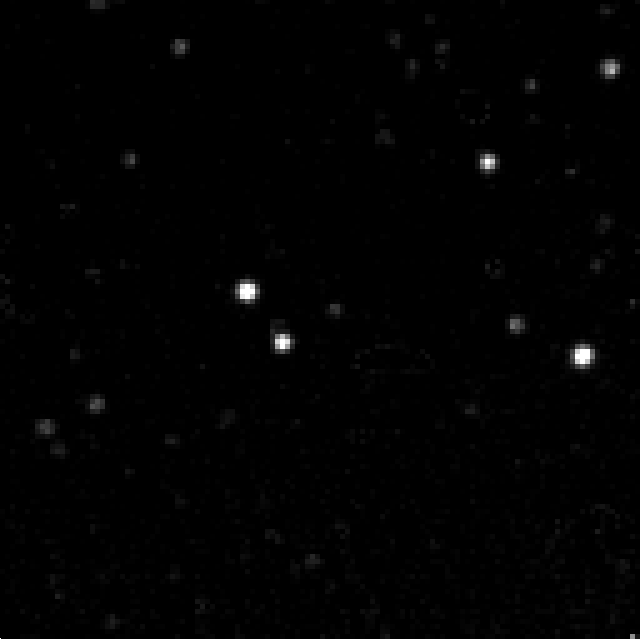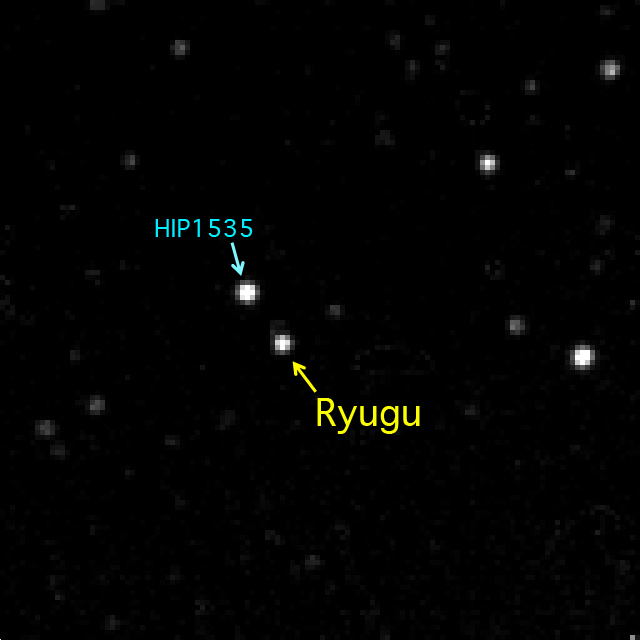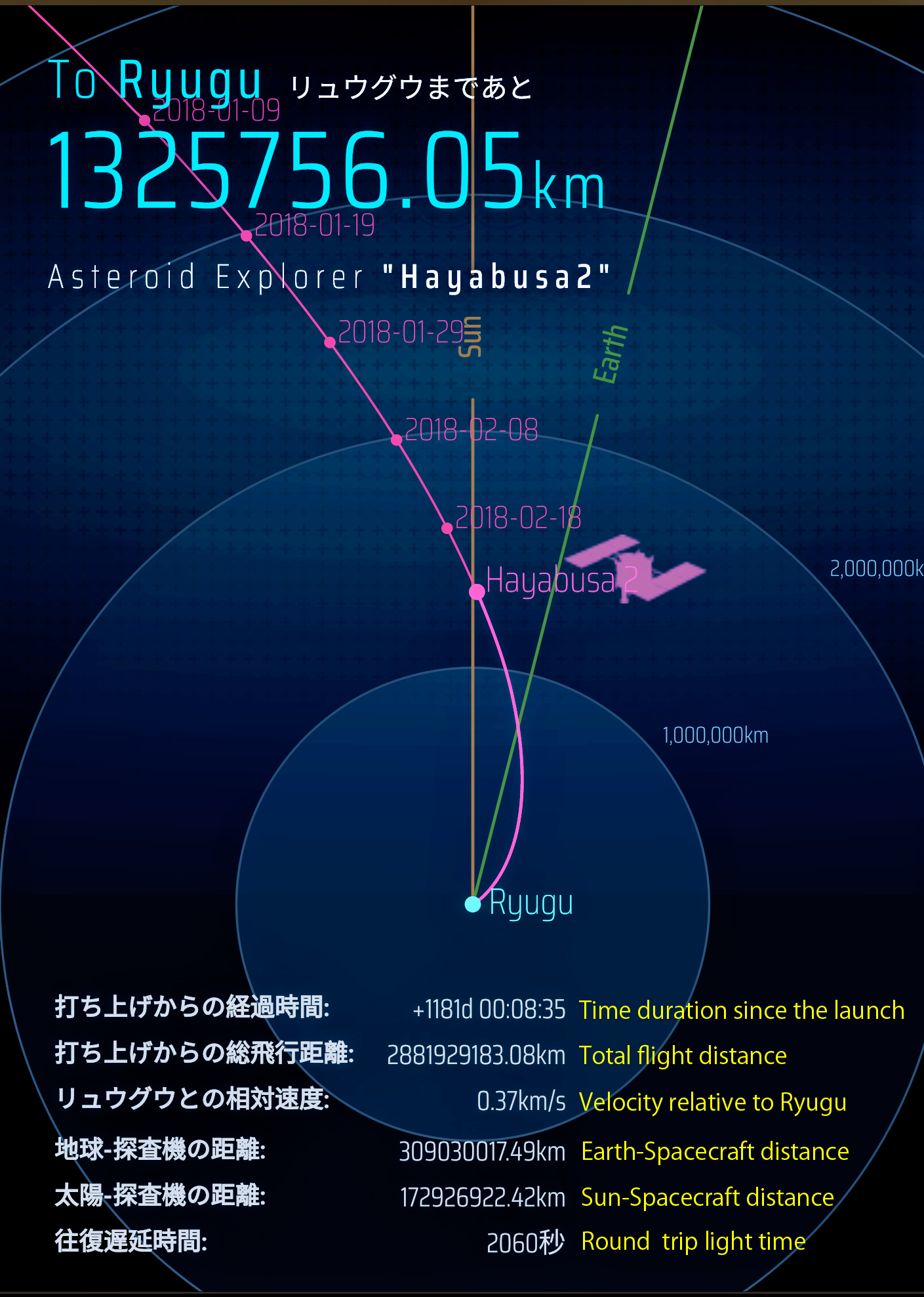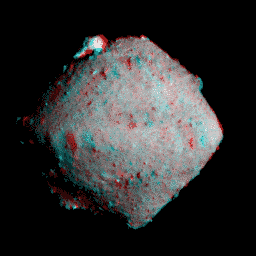You are using an out of date browser. It may not display this or other websites correctly.
You should upgrade or use an alternative browser.
You should upgrade or use an alternative browser.
Updates Rebirth of the Immortal Falcon: JAXA Hayabusa 2 updates
- Thread starter IronRain
- Start date
Still working on that goodies pack....hope to release that before rocket rolls-out in a few hours time. :shrug:
In the mean time....here's a CG of the mission profile:
In the mean time....here's a CG of the mission profile:
The weather is looking good for launch:
Weather Forecast for Tanegashima Airport, Japan on December 3, 2014 (1 p.m.)
Partly cloudy. High 14C. Winds WNW at 15 to 30 km/h.
Time|Temps|Dew Point|Relative Humidity|Precip|Snow|Cloud cover|Pressure|Wind|Weather
1 PM|14°C|7°C|60%|0%|0%|54%|1021 hPa|21 km/h W|
 Partly cloudy
Partly cloudy
....and here's the launch sequence:
Launch Sequence:
{colsp=2}
Event
|
Time [mm:ss]
|
Altitude [km]
|
Inertial speed [km/s]
*) Moment of combustion pressure reaching 2% of maximum
**) Thrust strut cutoff

.....and the rocket is now on its way to the launch pad right now!
Weather Forecast for Tanegashima Airport, Japan on December 3, 2014 (1 p.m.)
Partly cloudy. High 14C. Winds WNW at 15 to 30 km/h.
1 PM|14°C|7°C|60%|0%|0%|54%|1021 hPa|21 km/h W|
....and here's the launch sequence:
Launch Sequence:
1.
|Liftoff|
0:00
|
0
|
0.4
2.
|Solid rocket booster burnout*|
1:39
|
46
|
1.6
3.
|Solid rocket booster jettison**|
1:48
|
53
|
1.6
4.
|Payload fairing jettison|
4:10
|
137
|
2.8
5.
|1st stage engine (main engine) cutoff (MECO)|
6:36
|
202
|
5.6
6.
|1st and 2nd stages separation|
6:44
|
207
|
5.6
7.
|2nd stage ignition #1 (SEIG-1)|
6:50
|
210
|
5.6
8.
|2nd stage engine cutoff #1 (SECO-1)|
11:18
|
254
|
7.8
9.
|2nd stage ignition #2 (SEIG-2)|
1:39:23
|
250
|
7.8
10.
|2nd stage engine cutoff #2 (SECO-2)|
1:43:24
|
313
|
11.8
11.
|Hayabusa 2 separation|
1:47:15
|
889
|
11.4
12.
|
Shi'nen 2 small satellite
separation|
1:53:55
|
2867
|
10.4
13.
|
DESPATCH small satellite
separation|
1:58:05
|
4418
|
9.7
14.
|
PROCYCON small satellite
separation|
2:02:15
|
6068
|
9.2
*) Moment of combustion pressure reaching 2% of maximum
**) Thrust strut cutoff

.....and the rocket is now on its way to the launch pad right now!
T-1 hour 20 minutes - here's the live broadcast:
[ame="http://www.youtube.com/watch?v=-9TwlwZobc4"]Asteroid Explorer "Hayabusa2" Launch Live Broadcast[/ame]
[ame="http://www.youtube.com/watch?v=-9TwlwZobc4"]Asteroid Explorer "Hayabusa2" Launch Live Broadcast[/ame]
No-one's watching? :hmm:
Hayabusa 2 is now in low Earth orbit! One orbit away from a second burn that puts it away from Earth.
Hayabusa 2 is now in low Earth orbit! One orbit away from a second burn that puts it away from Earth.
samplereturn
New member
- Joined
- Jun 3, 2008
- Messages
- 5
- Reaction score
- 0
- Points
- 1
Great Launch ! Good luck for another ambitious mission !
I was watching, and of course, listening to this during the launch.No-one's watching? :hmm:
Hayabusa 2 is now in low Earth orbit! One orbit away from a second burn that puts it away from Earth.
- Joined
- Oct 11, 2009
- Messages
- 3,484
- Reaction score
- 404
- Points
- 123
- Location
- Utrecht
- Website
- www.spaceflightnewsapi.net
No-one's watching? :hmm:
Hayabusa 2 is now in low Earth orbit! One orbit away from a second burn that puts it away from Earth.
I was! It was just awfully early in The Netherlands :lol:
Great launch (beautiful rocket!) and congratulations to JAXA

Unstung
Active member
T-1 hour 20 minutes - here's the live broadcast:
Asteroid Explorer "Hayabusa2" Launch Live Broadcast
The launch takes place around 1:09:40 on the broadcast. Here's a direct link, starting at T-10, for convenience.
http://www.youtube.com/watch?v=FYWh1rECgvI
A Hatsune Miku song meant to commemorate the mission (even though it means falcon instead of phoenix, it still represents the "rebirth" theme)
A Hatsune Miku song meant to commemorate the mission (even though it means falcon instead of phoenix, it still represents the "rebirth" theme)














Last edited:
Soheil_Esy
Fazanavard فضانورد
- Joined
- Apr 5, 2015
- Messages
- 744
- Reaction score
- 19
- Points
- 18
PROCYON asteroid 2000 DP107 fly-by cancelled
Japanese interplanetary probe will not be able to fly by asteroid
05/09/2015

PROCYON (PRoximate Object Close flYby with Optical Navigation) is a 69 kg-class microsatellite developed by the University of Tokyo (UT) and JAXA/ISAS (Japan Aerospace Exploration Agency/Institute of Space and Astronautical Science). Launched with Hayabusa 2, its goal was to perform a close flyby of an asteroid in early 2016.
The on-board ion engine's high voltage power trouble was of the most problematic. As the situation was not resolved end of April 2015, the planned Earth fly-by on 3 December 2015 and the asteroid 2000 DP107 fly-by on 12 May 2016 were abandoned.
http://www.sorae.jp/030906/5517.html
Japanese interplanetary probe will not be able to fly by asteroid
05/09/2015

PROCYON (PRoximate Object Close flYby with Optical Navigation) is a 69 kg-class microsatellite developed by the University of Tokyo (UT) and JAXA/ISAS (Japan Aerospace Exploration Agency/Institute of Space and Astronautical Science). Launched with Hayabusa 2, its goal was to perform a close flyby of an asteroid in early 2016.
The on-board ion engine's high voltage power trouble was of the most problematic. As the situation was not resolved end of April 2015, the planned Earth fly-by on 3 December 2015 and the asteroid 2000 DP107 fly-by on 12 May 2016 were abandoned.
http://www.sorae.jp/030906/5517.html
Ryugu Detected!
Nearly 3 years later...
Target found!

On February 26, 2018, Hayabusa2 saw its destination —asteroid Ryugu— for the first time! The photographs were captured by the ONC-T (Optical Navigation Camera - Telescopic) onboard the spacecraft. Images were taken between noon JST on February 26th and 9:00am the following morning, with about 300 shots taken in total. Data for nine of these images were transmitted from the spacecraft on February 27th, allowing us to confirm that Ryugu had indeed been seen. The animation shows these nine consecutive frames.
 |
|

{colsp=2}This is the series of nine pictures taken from about 12:00 (noon) to around 15:00 JST on February 26, 2018. The celestial body moving slightly from left to right near the centre of each frame is Ryugu. Objects that can only be seen momentarily as they appear and disappear between frames are image noise. The viewing angle of the photo is 0.8 deg. (Credit: JAXA, University of Tokyo, Kochi University, Rikkyo University, Nagoya University, Chiba Institute of Technology, Meiji University, University of Aizu and AIST. )
Ryugu's brightneess from Hayabusa2 is about magnitude 9, which would be impossible to see with the naked eye but visible with the ONC-T. Looking at the image above, you can see how the position of the surrounding stars relative to Ryugu appears to change as Hayabusa2 moves towards the asteroid. The distance between Ryugu and Hayabusa2 when the images were taken is about 1.3 million km. Ryugu as seen from Hayabusa2 is in the direction of the constellation Pisces.
Ryugu was photographed when the Sun, Hayabusa2 and Ryugu were almost in a line. This configuration can be seen in the figure below, which shows a snapshot of the header from the Hayabusa2 website on February 26, 2018, which continuously updates to show the position of Hayabusa2. If you were to stand on Ryugu, Hayabusa2 would be seen in the direction of the Sun.

The position of Hayabusa2 on February 26, 2018, captured from the diagram at the top of the mission website.
Hayabusa2 is currently using its ion engine to make adjustments to its course. This makes it difficult to alter the orientation of the spacecraft. However, at the alignment shown above, the ONC-T camera can image Ryugu without needing to make significant changes to the spacecraft's orientation. This made February 26th the perfect time to try and capture Ryugu's image with the ONC-T. From the data, Ryugu was observed to be exactly at the expected location based on Hayabusa2's estimated position. This tells us that Hayabusa2 is flying on the planned course.
"Now that we see Ryugu, the Hayabusa2 project has shifted to the final preparation stage for arrival at the asteroid. There are no problems with the route towards Ryugu or the performance of the spacecraft, and we will be proceeding with maximum thrust," explains Project Manager, Yuichi Tsuda.
The remaining images will be transmitted back to Earth from the spacecraft and allow us to further confirm the asteroid and spacecraft location. Although we can currently see Ryugu only as a point, it is very exciting for the whole project team to catch sight of the destination!
 |
|

The ONC-T was developed under collaboration between JAXA, the University of Tokyo, Kochi University, Rikkyo University, Nagoya University, Chiba Institute of Technology, Meiji University, The University of Aizu, the National Institute of Advanced Industrial Science and Technology (AIST).
Source: JAXA Press Release
Nearly 3 years later...
Target found!

On February 26, 2018, Hayabusa2 saw its destination —asteroid Ryugu— for the first time! The photographs were captured by the ONC-T (Optical Navigation Camera - Telescopic) onboard the spacecraft. Images were taken between noon JST on February 26th and 9:00am the following morning, with about 300 shots taken in total. Data for nine of these images were transmitted from the spacecraft on February 27th, allowing us to confirm that Ryugu had indeed been seen. The animation shows these nine consecutive frames.


{colsp=2}This is the series of nine pictures taken from about 12:00 (noon) to around 15:00 JST on February 26, 2018. The celestial body moving slightly from left to right near the centre of each frame is Ryugu. Objects that can only be seen momentarily as they appear and disappear between frames are image noise. The viewing angle of the photo is 0.8 deg. (Credit: JAXA, University of Tokyo, Kochi University, Rikkyo University, Nagoya University, Chiba Institute of Technology, Meiji University, University of Aizu and AIST. )
Ryugu's brightneess from Hayabusa2 is about magnitude 9, which would be impossible to see with the naked eye but visible with the ONC-T. Looking at the image above, you can see how the position of the surrounding stars relative to Ryugu appears to change as Hayabusa2 moves towards the asteroid. The distance between Ryugu and Hayabusa2 when the images were taken is about 1.3 million km. Ryugu as seen from Hayabusa2 is in the direction of the constellation Pisces.
Ryugu was photographed when the Sun, Hayabusa2 and Ryugu were almost in a line. This configuration can be seen in the figure below, which shows a snapshot of the header from the Hayabusa2 website on February 26, 2018, which continuously updates to show the position of Hayabusa2. If you were to stand on Ryugu, Hayabusa2 would be seen in the direction of the Sun.

The position of Hayabusa2 on February 26, 2018, captured from the diagram at the top of the mission website.
Hayabusa2 is currently using its ion engine to make adjustments to its course. This makes it difficult to alter the orientation of the spacecraft. However, at the alignment shown above, the ONC-T camera can image Ryugu without needing to make significant changes to the spacecraft's orientation. This made February 26th the perfect time to try and capture Ryugu's image with the ONC-T. From the data, Ryugu was observed to be exactly at the expected location based on Hayabusa2's estimated position. This tells us that Hayabusa2 is flying on the planned course.
"Now that we see Ryugu, the Hayabusa2 project has shifted to the final preparation stage for arrival at the asteroid. There are no problems with the route towards Ryugu or the performance of the spacecraft, and we will be proceeding with maximum thrust," explains Project Manager, Yuichi Tsuda.
The remaining images will be transmitted back to Earth from the spacecraft and allow us to further confirm the asteroid and spacecraft location. Although we can currently see Ryugu only as a point, it is very exciting for the whole project team to catch sight of the destination!


The ONC-T was developed under collaboration between JAXA, the University of Tokyo, Kochi University, Rikkyo University, Nagoya University, Chiba Institute of Technology, Meiji University, The University of Aizu, the National Institute of Advanced Industrial Science and Technology (AIST).
Source: JAXA Press Release
Less than 2000 km away! Will arrive at Ryugu on 27th of June (planned).
Stay up to date with Hayabusa-2 by visiting the official mission webpage.
You may also download the press conference material here (English version).
Stay up to date with Hayabusa-2 by visiting the official mission webpage.
You may also download the press conference material here (English version).
- Joined
- Nov 20, 2007
- Messages
- 11,825
- Reaction score
- 644
- Points
- 188
https://www.bbc.co.uk/news/science-environment-44521599
A Japanese spacecraft is sending back images as it approaches an irregularly shaped asteroid that some on the mission have compared to a dumpling.
The Hayabusa 2 spacecraft was launched in 2014 on a quest to study the asteroid Ryugu and deliver rocks and soil from its surface to Earth.
The craft is now about 215km away from Ryugu and should arrive on 27 June.
Hayabusa's camera is starting to resolve its shape, which has been likened to a Japanese dango dumpling.
- Joined
- Oct 11, 2009
- Messages
- 3,484
- Reaction score
- 404
- Points
- 123
- Location
- Utrecht
- Website
- www.spaceflightnewsapi.net
Hayabusa2 has arrived!
Source:
http://global.jaxa.jp/press/2018/06/20180627_hayabusa2.html
JAXA confirmed Hayabusa2, JAXA's asteroid explorer rendezvoused with Ryugu, the target asteroid.
On June 27, 2018, JAXA operated Hayabusa2 chemical propulsion thrusters for the spacecraft's orbit control.*
The confirmation of the Hayabusa2 rendezvous made at 9:35 a.m. (Japan Standard Time, JST) is based on the following data analyses;
・The thruster operation of Hayabusa2 occurred nominally
・The distance between Hayabusa2 and Ryugu is approximately 20 kilometers
・Hayabusa2 is able to maintain a constant distance to asteroid Ryugu
・The status of Hayabusa2 is normal
From this point, we are planning to conduct exploratory activities in the vicinity of the asteroid, including scientific observation of asteroid Ryugu and surveying the asteroid for sample collection.
*Hayabusa2 operation hours: 7:00 a.m. (JST) through 3:00 p.m. (JST), June 27. The thruster operation was pre-programmed in the event sequence earlier on the day and the command was automatically executed.
Source:
http://global.jaxa.jp/press/2018/06/20180627_hayabusa2.html
mahdavi3d
Active member
- Joined
- Nov 25, 2011
- Messages
- 536
- Reaction score
- 99
- Points
- 43
planetary.org : Ryugu global 3D animation

JAXA, University of Aizu, University of Tokyo, Kochi University, Rikkyo University, Nagoya University, Chiba Institute of Technology, Meiji University and AIST
This animation of Ryugu was created using images captured from a distance of about 40 kilometers on June 23, 2018. When viewing through red-and-blue 3D glasses, place the blue filter over your right eye.

JAXA, University of Aizu, University of Tokyo, Kochi University, Rikkyo University, Nagoya University, Chiba Institute of Technology, Meiji University and AIST
This animation of Ryugu was created using images captured from a distance of about 40 kilometers on June 23, 2018. When viewing through red-and-blue 3D glasses, place the blue filter over your right eye.
Similar threads
- Replies
- 1
- Views
- 601
- Replies
- 5
- Views
- 2K
- Replies
- 0
- Views
- 522
